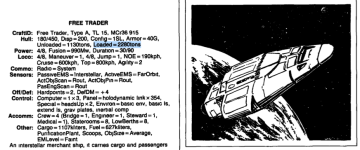infojunky
SOC-14 1K
Heh, this was the genesis of this entire thread. A excuse to rewrite the classic Streamlined ship with 2g thrust instead of 1g.This is why I maintain that a 2G maneuver drive is all you need to VTOL on "most" mainworlds (there will be occasional rare exceptions).




